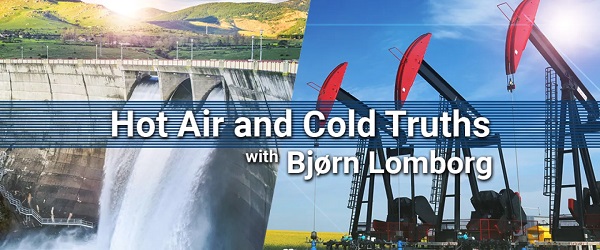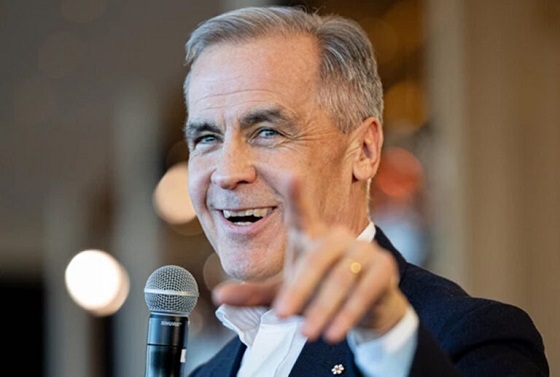Energy
Canadian Liquified Natural Gas (LNG) is the Cleaner Fuel Alternative that Asian Markets Want and Need – CPW
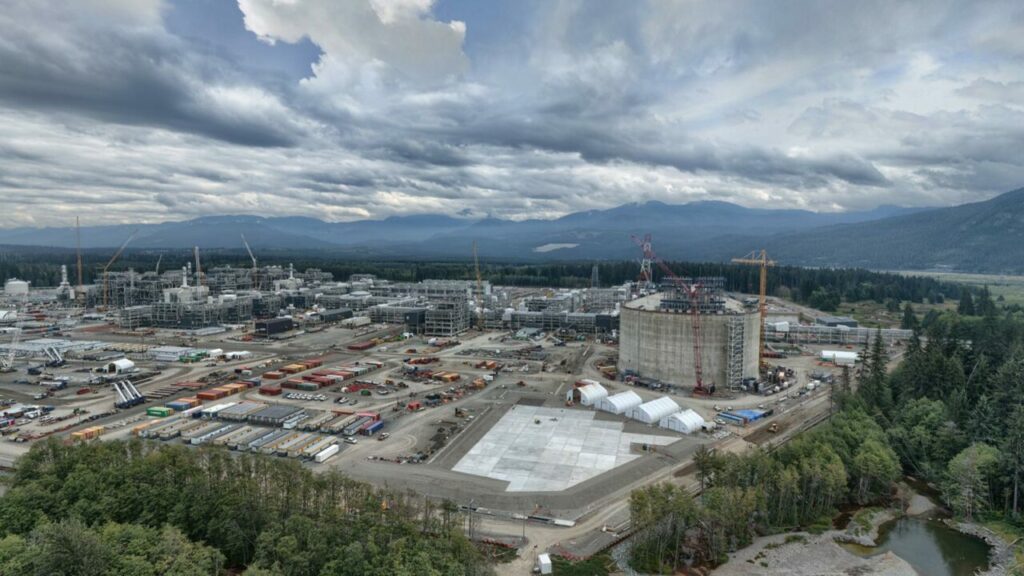
Trans Mountain LNG Terminal Expansion
From EnergyNow Media
A woman in rural China gets ready to make dinner. She starts with food prep, then reaches for her fuel source to begin cooking.
Her options: likely wood or coal.
As she cooks, she is probably not aware that nearly half a million people in China who cook with wood or coal have an increased risk of major eye diseases that lead to blindness.
This was detailed in a University of Oxford study that also showed nearly half of the world’s population (that’s 3.8 billion people) is exposed to household air pollution from cooking with “dirty” solid fuels like wood or coal.
Even if she knew all this, what other choice would she have? Everyone has to prepare food for their family.
Poor air quality and its effect on human health is a significant cost to consider when using coal, but there are others as well, such as greenhouse gas emissions.
When burned for energy, coal releases carbon dioxide into the atmosphere. If you shift from thinking about the individual cooking at home to large-scale coal burning for electricity generation, the problem becomes a major environmental concern — and a significant contributing factor to climate change.
How big is the problem?
Coal power plants produce 20% of global greenhouse gas emissions, more than any other single source, says the International Energy Agency (IEA).
This issue is important to us because that woman cooking at home could be any one of us. The difference is, we have options. With energy demand continuing to grow, the IEA reports that many countries feel they have little choice but to continue generating power with coal.
Furthermore, Canada Powered by Women research (which captures the opinions of 24% of all women in Canada) shows that the vast majority (84%) personally care about tackling climate change through global greenhouse gas (GHG) emission reduction.
So, what exactly is the solution to this problem? It’s choice.
The solution for regions of the world that don’t have access to different types of energy is to provide alternatives to what they have today. One choice can, and should, be Canadian liquified natural gas (LNG).
(Assuming, that is, Canadian suppliers are supported enough by regulatory environments to produce and export this resource. More on this later…)
Many parts of the world — particularly Asia — want to replace coal with cleaner energy like LNG. Foreign markets such as Japan, Korea, Malaysia, and China are interested in turning to Canada as their source, over countries with less-than-stellar environmental and human rights records (not to mention uncertain political structures).
“We have incredible volumes of lower-carbon gas in B.C., and it represents an important new source of energy,” says Teresa Waddington, vice president, corporate relations at LNG Canada. “Canada is politically stable in an increasingly energy security-conscious world. We have good infrastructure and good systems in place to make sure that we are able to produce very, very reliably.”
It’s not just industry players who are on board with exporting our energy resources to foreign markets, either.
The majority of Canadian women we asked consider it important to supply ethical and responsibly produced oil, as well as LNG, internationally.
Canada is primed to take its cleaner energy options to the world — we just need the ability to get it to market.
Canadian LNG: The Same Energy for Half the Emissions
Markets around the world are interested in LNG over coal for good reason. It has half the emissions of coal for the same output of energy.
But in some Asian countries, coal-burning plants are being built at a lightning-fast pace because populations and manufacturers need rapid access to energy, Reuters reports.
“If we can displace current and future energy electricity generation and power generation with LNG, we’re taking a massive step forward,” Waddington says.
Beyond being a cleaner molecule, Canadian LNG is particularly attractive because it’s produced ethically and safely, thanks in part to strict industry regulations.
“We have the lowest methane emissions leakage anywhere in the globe,” Waddington notes.
And this is in part because Canada has highly stringent requirements for managing methane leakage — which can lead to greenhouse gas emissions and is a common concern about this kind of fuel.
“If you look across the spectrum of environment, social, governance (ESG), Canadian LNG is made with human rights at the forefront,” says Waddington.
With Support, Canada Can Lead the Global LNG Opportunity
Canada has the potential to pull ahead as a global leader in the production and export of clean energy to foreign markets — a move that would play an important role in reducing global emissions, facilitating a prosperous Canada economy and providing for those in need at home and abroad.
But that will only happen if governments offer LNG projects the support they need in the form of utility infrastructure investments and clear and fast permitting, Waddington says.
As an example, partnerships with local hydro providers to power LNG facilities is one way provincial governments can lower the carbon intensity of processing and exporting the fuel, she says.
Then of course, there’s also the potential of government incentives that inspire more investment in LNG facilities, as well as in technologies that support the production of an ever-cleaner natural gas molecule.
With technology and innovation in Canada advancing all the time, Waddington is optimistic about the opportunity ahead.
“We’re going to see Canada continue to emerge as world-leading in some of the ways that we can [reduce emissions] — as long as we keep up this momentum, supported by government.”

About Canada Powered by Women
Uniting Women Through Bold Conversations
Canada Powered by Women represents Canadian women who believe sound energy policies are vital for the continuing economic prosperity of our country. We’re driven by the unshakable belief that a better world is possible and we can make it happen… together. Visit our website HERE for more information and JOIN OUR COMMUNITY.
Alberta
It’s On! Alberta Challenging Liberals Unconstitutional and Destructive Net-Zero Legislation
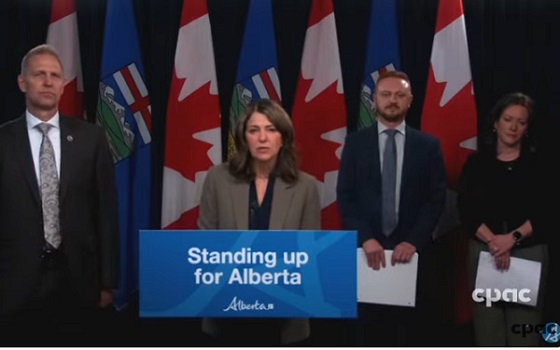
“If Ottawa had it’s way Albertans would be left to freeze in the dark”
The ineffective federal net-zero electricity regulations will not reduce emissions or benefit Albertans but will increase costs and lead to supply shortages.
The risk of power outages during a hot summer or the depths of harsh winter cold snaps, are not unrealistic outcomes if these regulations are implemented. According to the Alberta Electric System Operator’s analysis, the regulations in question would make Alberta’s electricity system more than 100 times less reliable than the province’s supply adequacy standard. Albertans expect their electricity to remain affordable and reliable, but implementation of these regulations could increase costs by a staggering 35 per cent.
Canada’s constitution is clear. Provinces have exclusive jurisdiction over the development, conservation and management of sites and facilities in the province for the generation and production of electrical energy. That is why Alberta’s government is referring the constitutionality of the federal government’s recent net-zero electricity regulations to the Court of Appeal of Alberta.
“The federal government refused to work collaboratively or listen to Canadians while developing these regulations. The results are ineffective, unachievable and irresponsible, and place Albertans’ livelihoods – and more importantly, lives – at significant risk. Our government will not accept unconstitutional net-zero regulations that leave Albertans vulnerable to blackouts in the middle of summer and winter when they need electricity the most.”
“The introduction of the Clean Electricity Regulations in Alberta by the federal government is another example of dangerous federal overreach. These regulations will create unpredictable power outages in the months when Albertans need reliable energy the most. They will also cause power prices to soar in Alberta, which will hit our vulnerable the hardest.”
Finalized in December 2024, the federal electricity regulations impose strict carbon limits on fossil fuel power, in an attempt to force a net-zero grid, an unachievable target given current technology and infrastructure. The reliance on unproven technologies makes it almost impossible to operate natural gas plants without costly upgrades, threatening investment, grid reliability, and Alberta’s energy security.
“Ottawa’s electricity regulations will leave Albertans in the dark. They aren’t about reducing emissions – they are unconstitutional, ideological activist policies based on standards that can’t be met and technology that doesn’t exist. It will drive away investment and punish businesses, provinces and families for using natural gas for reliable, dispatchable power. We will not put families at risk from safety and affordability impacts – rationing power during the coldest days of the year – and we will continue to stand up for Albertans.”
“Albertans depend on electricity to provide for their families, power their businesses and pursue their dreams. The federal government’s Clean Electricity Regulations threaten both the affordability and reliability of our power grid, and we will not stand by as these regulations put the well-being of Albertans at risk.”
Related information
- Conference Board of Canada socio-economic Impacts of Canada’s 2030 Emissions Reduction Plan – (April 2025)
- Alberta Electric System Operator’s position on Canadian Energy Regulations
Alberta
Alberta’s future in Canada depends on Carney’s greatest fear: Trump or Climate Change
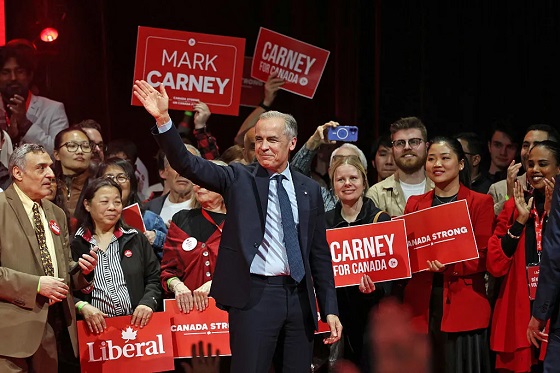
Oh, Canada
We find it endlessly fascinating that most Canadians believe they live in a representative democracy, where aspiring candidates engage in authentic politicking to earn their place in office. So accustomed are Canada’s power brokers to getting their way, they rarely bother to cover their tracks. A careful reading of the notoriously pliant Canadian press makes anticipating future events in the country surprisingly straightforward.
Back in December, when Pierre Poilievre was given better than 90% odds of replacing Prime Minister Justin Trudeau—and Mark Carney was still just an uncharismatic banker few had heard of—we engaged in some not-so-speculative dot-connecting and correctly predicted Carney’s rise to the top spot. Our interest was driven by the notoriously rocky relationship between Ottawa and the Province of Alberta, home to one of the world’s largest hydrocarbon reserves, and how Carney’s rise might be a catalyst for resetting Canada’s energy trajectory. In a follow-up article titled “The Fix Is In,” we laid out a few more predictions:
“Here’s how the play is likely to unfold in the weeks and months ahead: Carney will be elected Prime Minister on April 28 by a comfortable margin; [Alberta Premier Danielle] Smith will trigger a constitutional crisis, providing cover for Carney to strike a grand bargain that finally resolves longstanding tensions between the provinces and Ottawa; and large infrastructure permitting reform will fall into place. Protests against these developments will be surprisingly muted, and those who do take to the streets will be largely ignored by the media. The entire effort will be wrapped in a thicket of patriotism, with Trump portrayed as a threat even greater than climate change itself. References to carbon emissions will slowly fade…
In parallel, we expect Trump and Carney to swiftly strike a favorable deal on tariffs, padding the latter’s bona fides just as his political capital will be most needed.”
The votes have barely been counted, yet the next moves are already unfolding…
“Alberta Premier Danielle Smith says she’ll make it easier for citizens to initiate a referendum on the province’s future in Canada, after warning that a Liberal win in Monday’s election could spur a groundswell of support for Alberta separatism. Smith said on Tuesday that a newly tabled elections bill will give everyday Albertans a bigger say in the province’s affairs.
‘(We’re giving) Albertans more ways to be directly involved in democracy, and to have their say on issues that matter to them,’ Smith told reporters in Edmonton.
If passed, the new law would dramatically lower the number of signatures needed to put a citizen-proposed constitutional referendum question on the ballot, setting a new threshold of 10 per cent of general election turnout — or just over 175,000, based on Alberta’s last provincial election in 2023.”
“US President Donald Trump said on Wednesday that Canadian Prime Minister Mark Carney is looking to make a trade deal and will visit the White House within the next week. Trump said he congratulated Carney on his election victory when the Canadian leader called on Tuesday.
‘He called me up yesterday – he said let’s make a deal,’ Trump told reporters at the White House after a televised Cabinet meeting.”
Remember where you read it first.
-
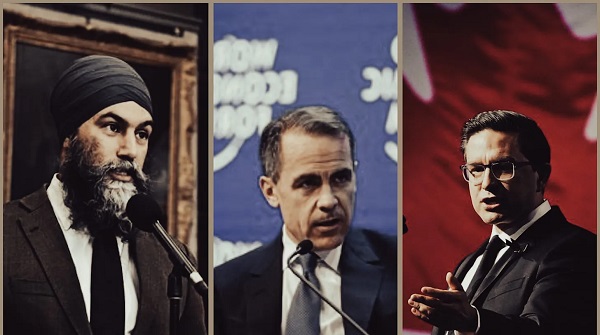
 2025 Federal Election2 days ago
2025 Federal Election2 days agoNDP Floor Crossers May Give Carney A Majority
-
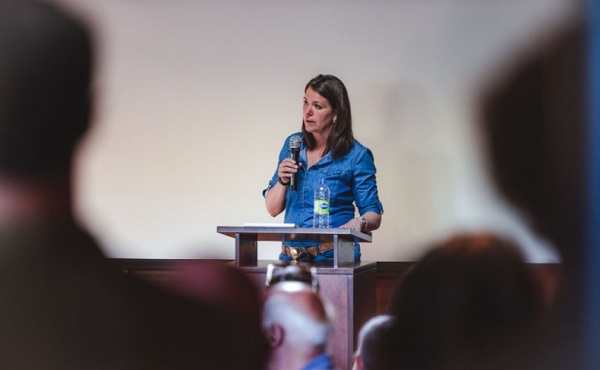
 Alberta2 days ago
Alberta2 days agoPremier Danielle Smith hints Alberta may begin ‘path’ toward greater autonomy after Mark Carney’s win
-
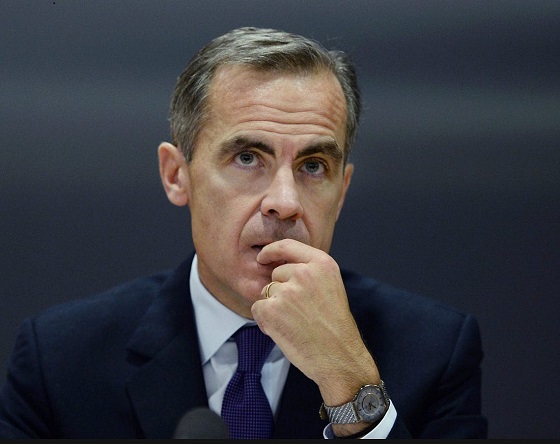
 espionage2 days ago
espionage2 days agoLongtime Liberal MP Warns of Existential Threat to Canada, Suggests Trump’s ’51st State’ Jibes Boosted Carney
-

 Bjorn Lomborg1 day ago
Bjorn Lomborg1 day agoHow Canada Can Respond to Climate Change Smartly
-

 Business2 days ago
Business2 days agoLosses Could Reach Nearly One Billion: When Genius Failed…..Again
-

 Alberta2 days ago
Alberta2 days agoPreston Manning: Canada is in a unity crisis
-

 Automotive1 day ago
Automotive1 day agoNew federal government should pull the plug on Canada’s EV revolution
-

 Business1 day ago
Business1 day agoNew federal government plans to run larger deficits and borrow more money than predecessor’s plan





